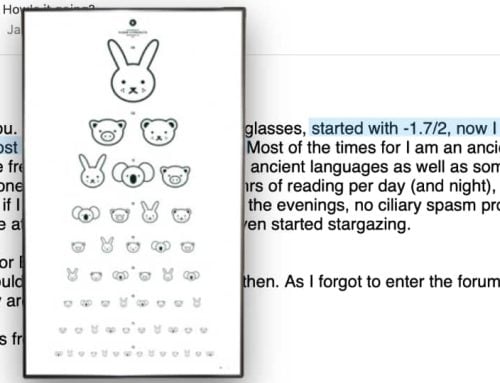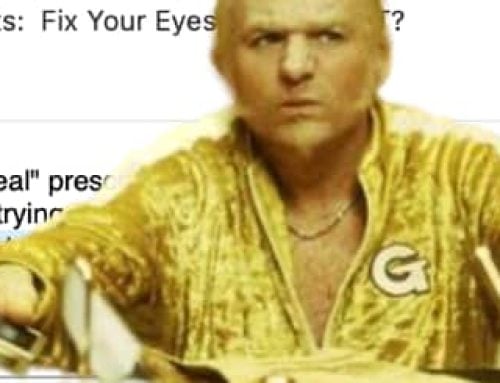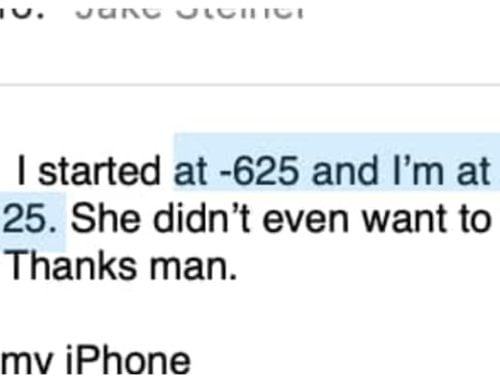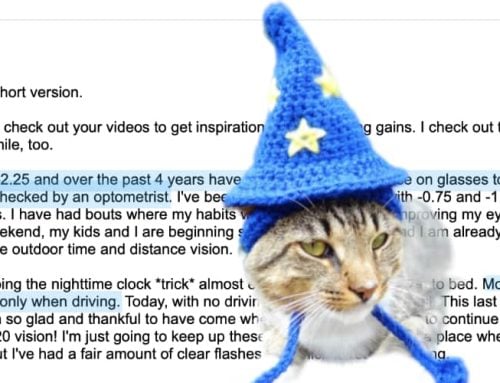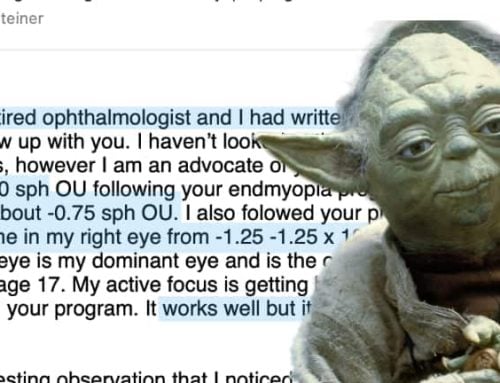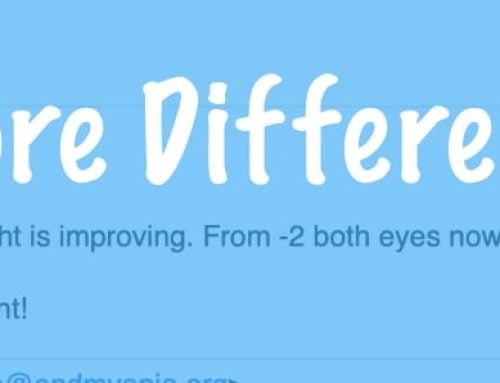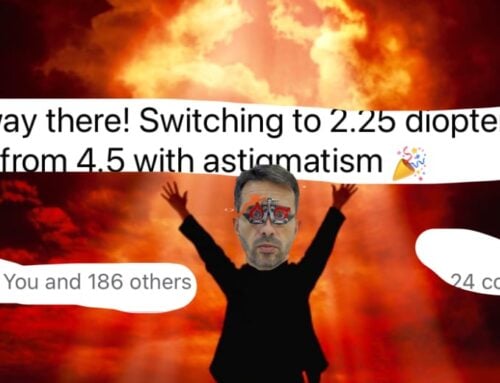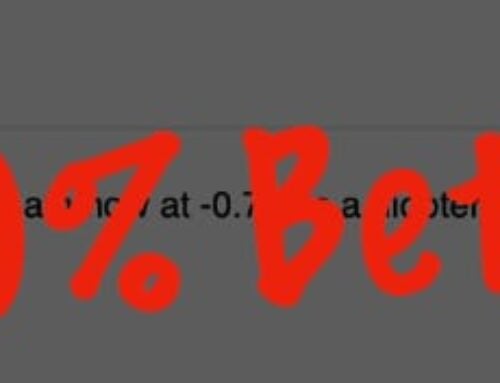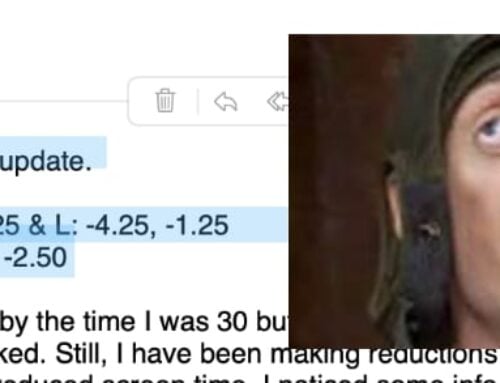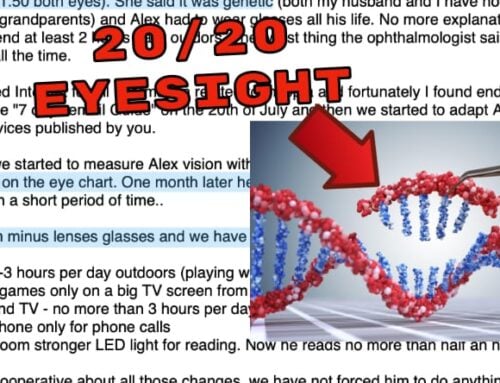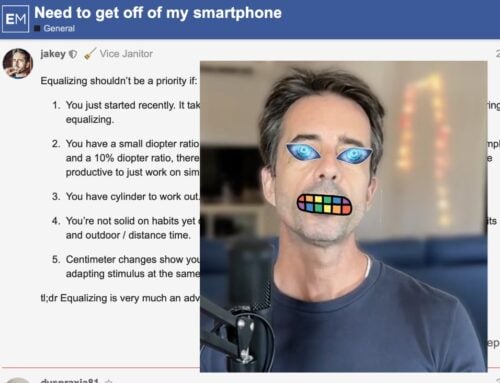Here’s something you probably already noticed, in your personal life.
You may have heard something said a hundred times. You heard it and heard it, but it never sank in. You never somehow translated in your own head, to make it meaningful to you. You go, yea yea, I know, got it, but it doesn’t actually “click” for you.
This happens quite a bit, with me and students and BackTo20/20.
I say all these things, really key pieces, as often as possible. I try to slim down everything non-essential, and just stick with bite-size segments that you can read, apply, build into your everyday life. But then this always happens:
Smart people, engaged people, insightful people, they go, ahhhhhhh. NOW I get it.
I hear this after having said the same thing five times, ten times, a hundred times. It’s nobody’s fault, it’s just something about saying it the right way, at the right time, perhaps luck, where you catch it, apply it, and then it all clicks.
Christian points out several of these, in a forum post from the other day. I found myself nodding my head as I was reading it, wanting to say, yes. Exactly. These are all key things.
So let’s let Christian tell it in his own words in his recent forum reply to Ampere, maybe this is the time something new clicks for you:
Hey Ampere!
– So how much improvement have you made recently?
I started applying the things I learned in the program (and the program only) in April last year, and I went from -1.5 to -1 now. Although a 0.5 doesn’t sound like much, it brought me to see fine at a meter away from print and it allows me to take my glasses off during a sunny day and see 20/40. Even in rainy or bad days, if I’m eating things that are not too high carb or sugary (as in pasta or cake) I can still keep the 20/40.
– What have your habits been like?
1. I keep record of the time I spend on close-up and try to not let it get past 3 hours (although I try to do my best to keep it at around 2 hours).
2. Then I take a break (just not looking at any close print or my laptop/phone screen) and try to go outdoors to focus on text that is far away. If I can’t go outdoors I used text that I find around the house. For example, I use the eye chart that is hanging in my room, I step back from a calendar that is in the kitchen and do focus pulling and even when taking a shower I do a little bit of focusing on the text on the shampoo bottle lol.
3. When I’m walking outdoors there are times when there’s no text to focus on so I use that time to do some peripheral awareness (installment 13) or just relax my eyes and look at things around.
4.If I have time or the opportunity, I try to go outside while the sun is going down and do some focus pulling to get an extra leap.Btw: It took me a while to understand that it really is distance vision that improves distance vision. So at the beginning I was spending too much time close-up doing pushing focus. So for some months, although I still improved, I may have been able to improve more if I had emphasized on pulling focus outdoors.
Now those are my basic habits. I tweak them here and there with some of the stuff I got from the advanced installments, but that’s pretty much it.
I have notes with a summary of the things I learned from the installments and the habits I have to keep. I might type them someday and share them here if it helps anybody.
– Favorite things to pull focus on?
TEXT, TEXT, TEXT.
I emphasize on text because it took me a long time to understand it, it is really the best thing to focus on. When I try to focus on “things,” I think I’m seeing better but then when I put my glasses I realize there’s a lot of texture and details that I’ve missed. But I don’t know that cause I can still “see” them, just a bit blurry. But with text, if I can’t read something then I know I haven’t cleared it.
Now besides that, I also sometimes focus on power lines, tree branches, windows that have sharp edges and things that help me more with double vision. But I’ve honestly had trouble with double vision (and maybe ghosting?) in this stage of low myopia and since it is getting more noticeable I’m gonna be posting some questions soon.
I just read the posts you’ve created. I see we’re both on the low myopia side and that you’re from the East Coast, I’m all the way across, in the West Coast. Best regards!
January 2013 L: sph -1.75 cyl/axis -0.75 180
R: sph -2.5 cyl/axis -0.75 10
July 12 2015: L & R -1.25
October 23 2015: L & R -1
Yea?
Text, indeed. The whole premise of stimulus is based on working with text. We talk about this quite a bit in the blog, and certainly a lot in BackTo20/20. Engaging your visual cortex, getting into the distinctions of blur, double vision, pushing and pulling focus, it all hinges on using text. If you’re not reading, you’re not getting real stimulus.
And the other piece, distance vision improves distance vision.
I must have said this a thousand times, collectively, here on the site. I have yet to find any other meaningful approach to natural myopia control that applies this very basic premise. We control eye strain with various close-up strategies and lens choices. You can get some improvement from close-up stimulus. But the point of all this myopia work is to get better distance vision. You’ll only accomplish with by challenging, what? Distance vision, of course!
BackTo20/20 makes it easy, since it puts all the key pieces on autopilot. If you do the blog only, you have to piece all this together from the various posts. If you’ve tried other things, even if they are sound in theory, if you don’t get the connection between close-up/strain management and distance/stimulus, you’re not going to make significant reductions to your myopia.
If you like this contribution from Christian, also check out his recent post on his key contributors to improving his eyesight.
Cheers,
-Jake






